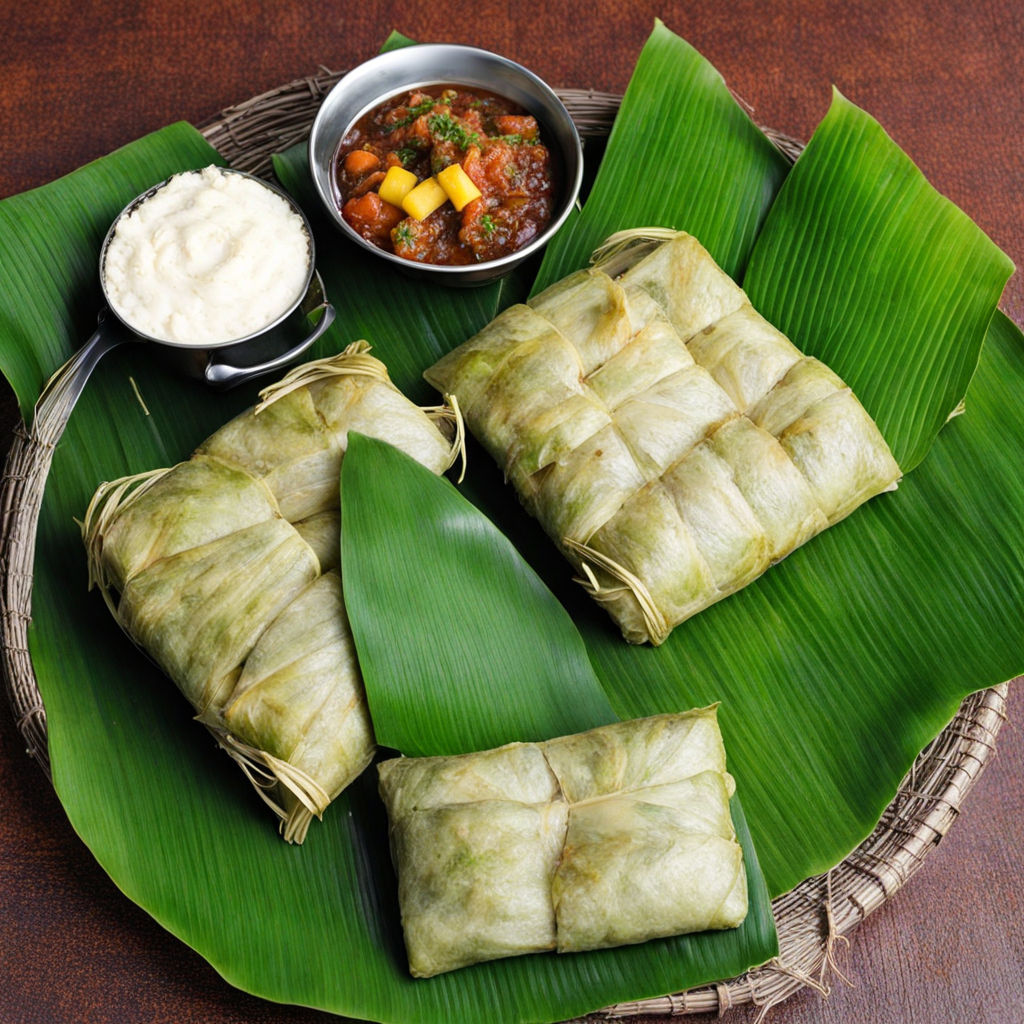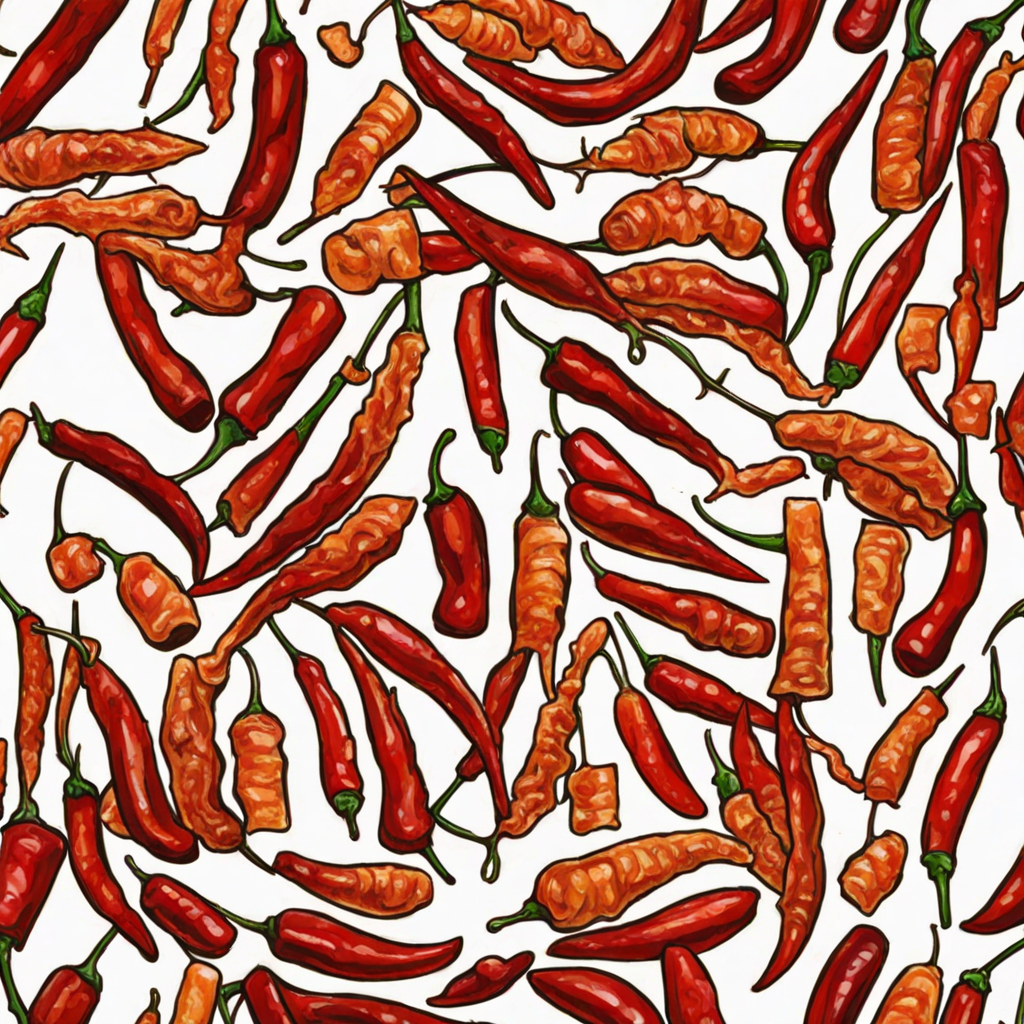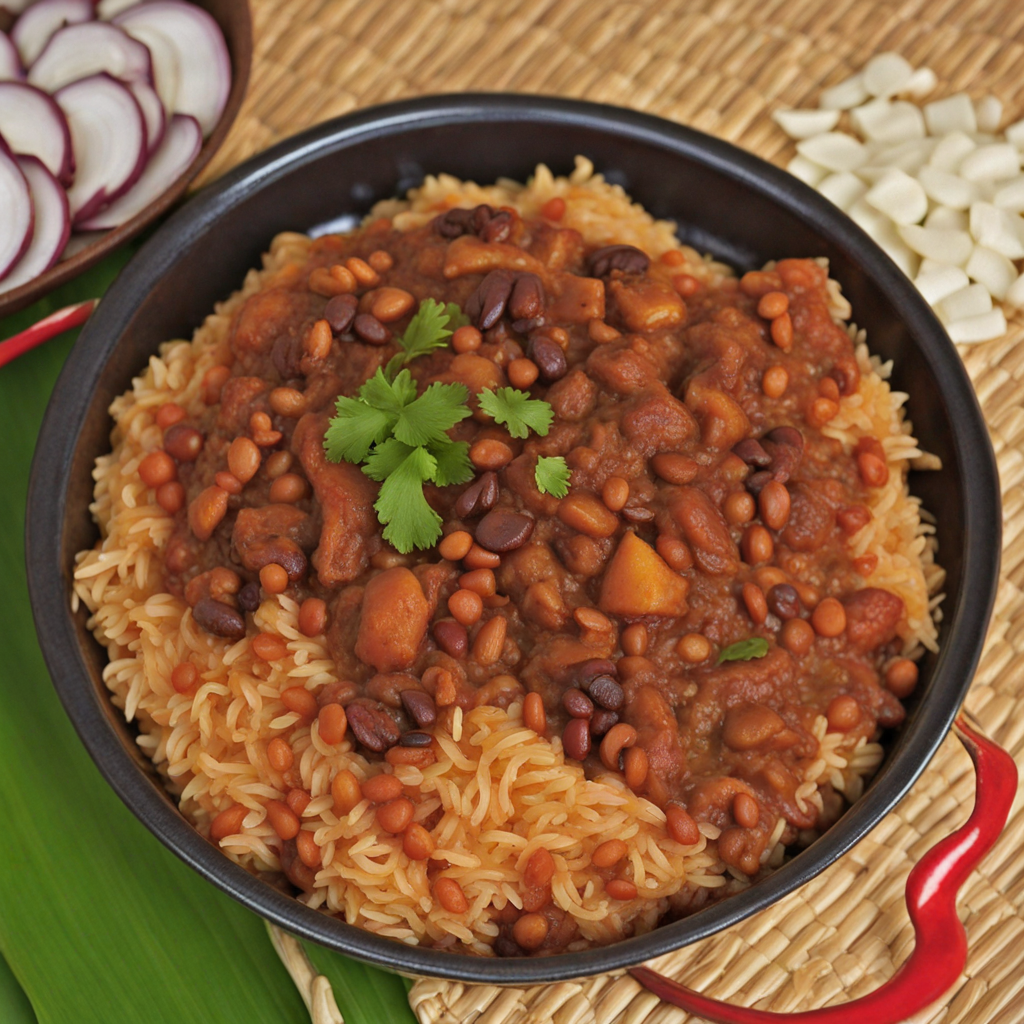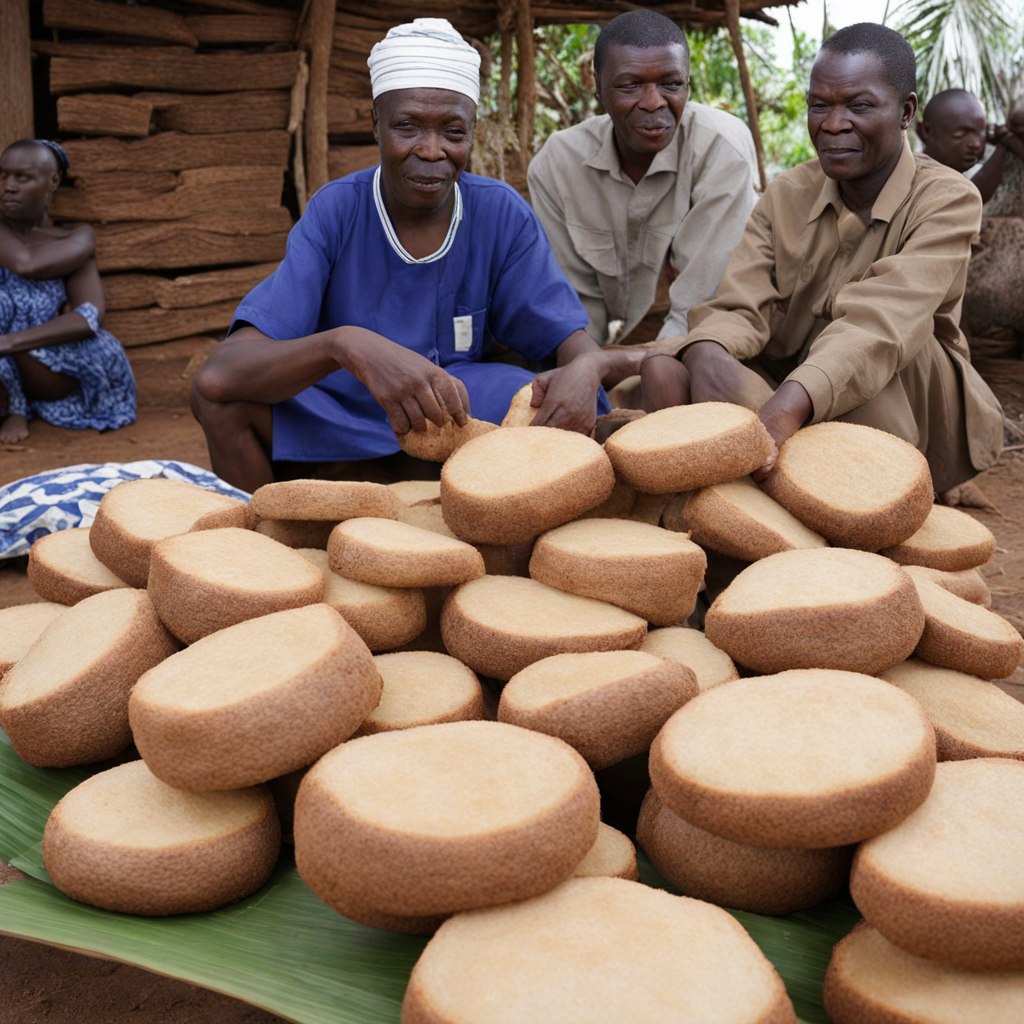Chikwanga
Chikwanga is a traditional Congolese dish that embodies the rich culinary heritage of the Democratic Republic of Congo. This delightful food is primarily made from cassava, a starchy root vegetable that is a staple in many African diets. The process of making Chikwanga involves peeling and fermenting the cassava, which is then finely grated and wrapped in banana leaves before being steamed. This method not only enhances the flavor but also infuses the dish with a subtle aroma that speaks to its earthy origins. The texture is soft, slightly chewy, and it has a neutral taste that makes it an excellent accompaniment to a variety of meats and stews. The beauty of Chikwanga lies in its versatility as a side dish. It pairs wonderfully with flavorful sauces, such as moambe, a palm nut sauce often made with chicken or fish, or any spicy vegetable stew. The absorbent nature of Chikwanga allows it to soak up these rich flavors, creating a delightful balance on the palate. In Congolese culture, it is often shared during family gatherings and celebrations, symbolizing unity and togetherness. Its preparation can be labor-intensive, but the communal aspect of cooking and sharing this dish is what makes it truly special. As you delve into the world of Chikwanga, you'll discover not just a dish but a cultural experience that connects you to the heart of Congolese cuisine. The combination of its unique preparation, the use of local ingredients, and the traditions surrounding its consumption offer a glimpse into the Congolese way of life. Whether enjoyed at a bustling market or made at home for a special occasion, Chikwanga is a culinary gem that invites you to explore the diverse flavors and rich stories of the Congo.
How It Became This Dish
Chikwanga: A Culinary Journey Through Congo’s History #### Origin and Ingredients Chikwanga is a traditional dish originating from the Democratic Republic of the Congo (DRC), a country rich in cultural diversity and culinary heritage. At its core, chikwanga is made from cassava, a starchy root vegetable that is a staple in many African diets. The preparation involves peeling, grating, and then fermenting or cooking the cassava. The fermented cassava is then wrapped in leaves, typically banana leaves, and steamed or boiled to create a dense, dough-like consistency. The origins of chikwanga date back to ancient times, when the indigenous populations of the Congo River Basin began cultivating cassava, a crop that thrived in the humid, tropical climate of the region. Cassava, known for its resilience and ability to grow in poor soil conditions, quickly became a staple food for various ethnic groups in the area. The fermentation process, which not only enhances the flavor but also makes the cassava easier to digest, likely evolved as a practical means of food preservation and preparation. #### Cultural Significance Chikwanga is more than just a food item; it is a cultural symbol that embodies the communal spirit of the Congolese people. Traditionally, the preparation of chikwanga involves family and community participation. Women often gather to process the cassava, sharing stories, laughter, and cultural traditions as they work. This collective cooking experience strengthens social bonds and reinforces the importance of community in Congolese culture. In the DRC, chikwanga is often served with various accompaniments, such as stews, grilled meats, and vegetables. It is a common feature at celebrations, gatherings, and religious ceremonies, underscoring its role in communal feasting. The dish is particularly significant during important life events, including weddings, funerals, and harvest festivals, where it is seen as a symbol of abundance and hospitality. Additionally, chikwanga’s preparation and consumption are steeped in symbolic meanings. The act of wrapping and steaming the cassava in leaves mirrors the nurturing qualities of motherhood, suggesting that food is not just sustenance but also a form of love and care. The use of local leaves, such as banana leaves, further emphasizes the connection to the land and the importance of local ingredients in Congolese cuisine. #### Development and Adaptation As the DRC has experienced historical changes, so too has chikwanga evolved. The colonial period brought significant disruption to traditional food practices, with the introduction of foreign crops and agricultural practices. However, despite these influences, cassava remained a vital part of the Congolese diet. In fact, during times of conflict and economic instability, cassava's adaptability and resilience made it an even more critical food source. In the late 20th century, with the rise of globalization and urbanization, chikwanga began to take on new forms and interpretations. The traditional methods of preparation persisted in rural areas, where communities continue to uphold their culinary heritage. However, in urban centers like Kinshasa, chikwanga has adapted to modern lifestyles. Street vendors and restaurants often serve chikwanga in more accessible forms, and it can now be found paired with a variety of contemporary dishes, reflecting the dynamic nature of Congolese cuisine. The globalization of food culture has also led to a renewed interest in traditional dishes like chikwanga. As Congolese diaspora communities spread across the globe, they have brought their culinary traditions with them, introducing chikwanga to new audiences. This has sparked a renaissance of interest in African cuisines, with chefs and food enthusiasts experimenting with traditional recipes, thereby keeping the legacy of chikwanga alive. Moreover, the health benefits of cassava have garnered attention in recent years. High in carbohydrates and gluten-free, cassava has become popular among health-conscious consumers. This trend has led to innovative interpretations of chikwanga, where chefs incorporate modern cooking techniques, such as baking or grilling, to create healthier versions of the traditional dish while maintaining its essence. #### Chikwanga in Contemporary Society Today, chikwanga stands as a symbol of resilience and cultural identity for the Congolese people. Its presence in both rural and urban settings highlights the continuity of tradition amidst change. In urban areas, chikwanga is often served in restaurants that celebrate Congolese cuisine, while in rural communities, it remains a staple food prepared for family gatherings and special occasions. As the world becomes increasingly interconnected, chikwanga has also found its way into the broader culinary landscape. International food festivals, cultural exhibitions, and social media platforms have allowed for greater visibility of Congolese cuisine, with chikwanga at the forefront. Chefs and food bloggers are sharing their interpretations of this traditional dish, educating audiences about its origins and cultural significance. In this contemporary context, chikwanga has transcended its role as mere sustenance to become a vessel for storytelling and cultural exchange. It serves as a reminder of the importance of preserving culinary heritage while embracing innovation. The dish encapsulates the spirit of the Congolese people—their history, struggles, and triumphs—making it an enduring symbol of their identity. #### Conclusion Chikwanga is more than just a dish; it is a reflection of the rich tapestry of Congolese culture and history. From its humble origins as a staple food to its current status as a symbol of resilience and community, chikwanga embodies the spirit of the Congolese people. As it continues to evolve and adapt in a changing world, this traditional dish remains a testament to the enduring power of food as a connector of people and cultures. Through chikwanga, the stories, flavors, and traditions of the Democratic Republic of the Congo are preserved and shared, ensuring that this cherished culinary heritage will thrive for generations to come.
You may like
Discover local flavors from Congo







